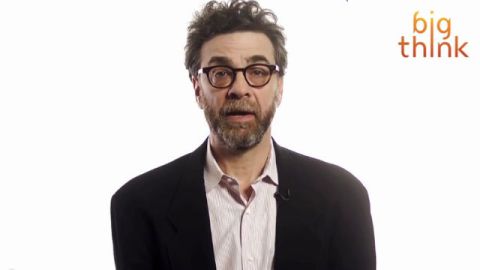Think Like a Freak and Break Barriers

Takeru Kobayashi is a legend of Coney Island’s famous hot dog eating contest. How did he learn to crush the competition, double the world record, and go on to set six Guinness Records as a competitive eater? Stephen Dubner, journalist and award-winning co-author of Freakonomics, explains in his latest book with economist Steven Levitt, Think Like a Freak.
In the below video clip from Big Think’s interview, Dubner highlights some of the strategies that help people break barriers. In the quirky case of Kobayashi, he knew how to ask the right questions. By doing so, he redefined his problem and tackled an issue that his competitors had overlooked.
“As we write in Think Like a Freak, a lot of the problems that we all set out to solve as society, whether they’re education problems or famine, poverty – any kind of policy problems – we often think we’re going for the real problem, or the underlying problem, when, in fact, we’re not,” explains Dubner. “We’re often attacking kind of a symptom or the part of the problem that bothers us. And sometimes you really need to redefine the problem you’re trying to solve in order to ask a better question like Kobay did to get better answers.”
Thinking like a freak also requires experimentation. It’s okay not to know all of the answers. In fact, it’s an advantage to know what you don’t know. By doing so, it frees you up to explore and discover, leading to fresh insights and solutions.
“Experimentation can give great feedback, great answers,” says Dubner. “[But] a lot of people like to assume they know the solution to a problem when they don’t.”
For more on how to think like a freak and its advantages, watch a clip from Big Think’s interview:
brightcove.createExperiences();
// ]]>





